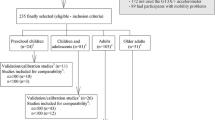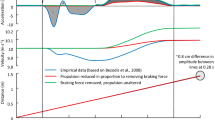Abstract
Machine learning methods such as a stepwise linear regression and a feedforward neural network were implemented and analyzed for their capability of estimating stride length using wearable sensors. Strides were segmented using acceleration data from a sacrum mounted inertial measurement unit. Stride length was then obtained by calculating the difference in position from a local positioning system (LPS) operating in the ultrawide bandwidth. Using the last stride of the trial, 27 predictor variables from the LPS were analyzed. Position data from motion capture (MOCAP) were used (i.e. the reference system) for determining accuracy of each machine learning method. Variables from the stepwise linear regression model were used as input nodes for the neural network. To avoid overfitting the data in the neural network, a gradient descent optimization algorithm was used. Based on an a priori analysis, 90 participants were recruited and performed three self-selected walk, run and sprint speeds. Upon analyzing, the lowest normalized root mean square error was 0.08 by the feedforward neural network (i.e. the comparator) after receiving inputs from the regression model and learning stride length estimates from MOCAP. Therefore, the neural network accurately estimated stride length when learning from a reference system such as motion capture.



Similar content being viewed by others
References
Morin JB, Samozino P, Murata M, Cross MR, Nagahara R (2019) A simple method for computing sprint acceleration kinetics from running velocity data: replication study with improved design. J Biomech 94:82–87. https://doi.org/10.31236/osf.io/vgqzs
Reina Román M, García-Rubio J, Feu S, Ibáñez SJ (2019) Training and competition load monitoring and analysis of women’s amateur basketball by playing position: approach study. Front Psychol 9:2689
Willy RW (2019) Innovations and pitfalls in the use of wearable devices in the prevention and rehabilitation of running related injuries. Phys Ther Sport 29:26–33. https://doi.org/10.1016/j.ptsp.2017.10.003
Linke D, Link D, Lames M (2018) Validation of electronic performance and tracking systems EPTS under field conditions. PLoS ONE 13(7):e0199519. https://doi.org/10.1371/journal.pone.0199519
Alt PS, Baumgart C, Ueberschär O, Freiwald J, Hoppe MW (2020) Validity of a local positioning system during outdoor and indoor conditions for team sports. Sensors 20:5733. https://doi.org/10.3390/s20205733
Wang D, Chen L, Piscarreta D, Tam KW (2015) Classification and regression of ultra wide band signals. Proceedings of 2015 Chinese automation congress (CAC). https://doi.org/10.1109/cac.2015.7382815
Zijlstra W, Hof AL (2003) Assessment of spatio-temporal gait parameters from trunk accelerations during human walking. Gait Posture 18:1–10. https://doi.org/10.1016/s0966-6362(02)00190-x
Siciliano B, Khatib O (2016) Inertial Sensors, GPS, and Odometry. Handbook of robotics. Springer International Publishing, New York, pp 477–490
Potter MV, Ojeda LV, Perkins NC, Cain SM (2019) Effect of IMU design on IMU-derived stride metrics for running. Sensors 19:2601. https://doi.org/10.3390/s19112601
Li X, He J, Xu L, Wang Q (2016) The effect of multipath and NLOS on TOA ranging error and energy based on UWB. Proceedings of the international conference on consumer electronics-Taiwan (ICCE-TW)
Singh P, Esposito M, Barrons Z, Clermont CA, Wannop J, Stefanyshyn D (2021) Measuring gait velocity and stride length with an ultrawide bandwidth local positioning system and an inertial measurement unit. Sensors 21:2896. https://doi.org/10.3390/s21092896
Yang S, Li Q (2012) Inertial sensor-based methods in walking speed estimation: a systematic review. Sensors 12:6102–6116. https://doi.org/10.3390/s120506102
Song Y, Shin S, Kim S, Lee D, Lee KH (2007) Speed estimation from a tri-axial accelerometer using neural networks. In: Proceedings of the IEEE engineering in medicine and biology society
Farokhmanesh F, Sadeghi MT (2019) Deep feature selection using an enhanced sparse group lasso algorithm. In: Proceedings of the iranian conference on electrical engineering (ICEE)
Tuttle WM (2018) Relationship of maximal strength and relative stride length in sprinters. dissertation, Indiana State University
Acharya R (2014) Navigation Receiver. Understanding Satellite Navigation. Elsevier, Cambridge, pp 155–215
Kawabata M, Goto K, Fukusaki C, Sasaki K, Hihara E, Mizushina T, Ishii N (2013) Acceleration patterns in the lower and upper trunk during running. J Sports Sci 31:1841–1853. https://doi.org/10.1080/02640414.2013.805884
Ng H, Tong HL, Tan WH, Abdullah J (2011) Improved gait classification with different smoothing techniques. Int J Adv Sci Eng Inf Technol 1(3):242–247. https://doi.org/10.18517/ijaseit.1.3.51
Popovic N, Miljkovic N, Djordjevic O, Sekara TB (2016). Artifact cancellation using median filter, moving average filter, and fractional derivatives in biomedical signals. Proceedings of the international conference on fractional differentiation and its applications (ICFDA 2016), Novi Sad, Serbia
Bland JM, Altman D (1986) Statistical methods for assessing agreement between two methods of clinical measurement. Lancet 327:307–310. https://doi.org/10.1016/s0140-6736(86)90837-8
Annadhorai A, Guenterberg E, Barnes J, Haraga K, Jafari R (2008) Human identification by gait analysis. In: Proceedings of the 2nd International workshop on systems and networking support for health care and assisted living environments
Zebari R, Abdulazeez A, Zeebaree D, Zebari D, Saeed JA (2020) Comprehensive review of dimensionality reduction techniques for feature selection and feature extraction. JASTT 1:56–70. https://doi.org/10.38094/jastt1224
Roelofs R (2019) Measuring generalization and overfitting in machine learning. dissertation, University of California Berkeley.
Martinasek Z, Hajny J, Malina L (2013) Optimization of power analysis using neural network. In: Proceedings of the international conference on smart card research and advanced applications
Ahmadi A, Destelle F, Unzueta L, Monaghan DS, Linaza MT, Moran K, O’Connor NE (2016) 3D human gait reconstruction and monitoring using body-worn inertial sensors and kinematic modeling. IEEE Sens J 16:8823–8831. https://doi.org/10.1109/jsen.2016.2593011
Yang S, Ting TO, Man KL, Guan SU (2013) Investigation of neural networks for function approximation. Procedia Comput Sci 17:586–594
Xu K, Zhang M, Li J, Du SS, Kawarabayashi KI, Jegelka S. (2021). How neural networks extrapolate: from feedforward to graph neural networks. In: Proceedings of ICLR 2021
Singh P, Esposito M, Barrons ZB, Clermont CA, Wannop JW, Stefanyshyn DJ (2020) Determining stride length of runners using an ultrawide bandwidth local positioning system equipped with an inertial measurement unit. In: Proceedings of the 44th meeting of the american society of biomechanics
Ogris G, Leser R, Horsak B, Kornfeind P, Heller M, Baca A (2012) Accuracy of the LPM tracking system considering dynamic position changes. J Sports Sci 30:1503–1511. https://doi.org/10.1080/02640414.2012.712712
Funding
This research was funded by NSERC Create We-TRAC Grant and MITACS Accelerate, Grant Number IT13453.
Author information
Authors and Affiliations
Contributions
PS, JWW and DJS designed the study PS, MJSE, ZBB and CAC participated in data acquisition and data analysis. PS wrote the manuscript and prepared all the figures PS, MJSE, ZBB, CAC, JWW and DJS reviewed the manuscript.
Corresponding author
Ethics declarations
Conflict of interest
As part of the MITACS Accelerate Grant, Author P.S. has received research support from XCo Tech Inc.
Additional information
Publisher's Note
Springer Nature remains neutral with regard to jurisdictional claims in published maps and institutional affiliations.
This article is a part of Topical Collection in Sports Engineering on Wearable Sensor Technology in Sports Monitoring, Edited by Dr. Hugo G Espinosa, Dr. Aimee Mears, Prof. Andy Stamm, Prof. Yuji Ohgi and Ms. Christine Coniglio.
Rights and permissions
Springer Nature or its licensor holds exclusive rights to this article under a publishing agreement with the author(s) or other rightsholder(s); author self-archiving of the accepted manuscript version of this article is solely governed by the terms of such publishing agreement and applicable law.
About this article
Cite this article
Singh, P., Esposito, M.J.S., Barrons, Z.B. et al. Utilizing data from a local positioning system as input into a neural network to determine stride length. Sports Eng 25, 16 (2022). https://doi.org/10.1007/s12283-022-00383-4
Accepted:
Published:
DOI: https://doi.org/10.1007/s12283-022-00383-4




